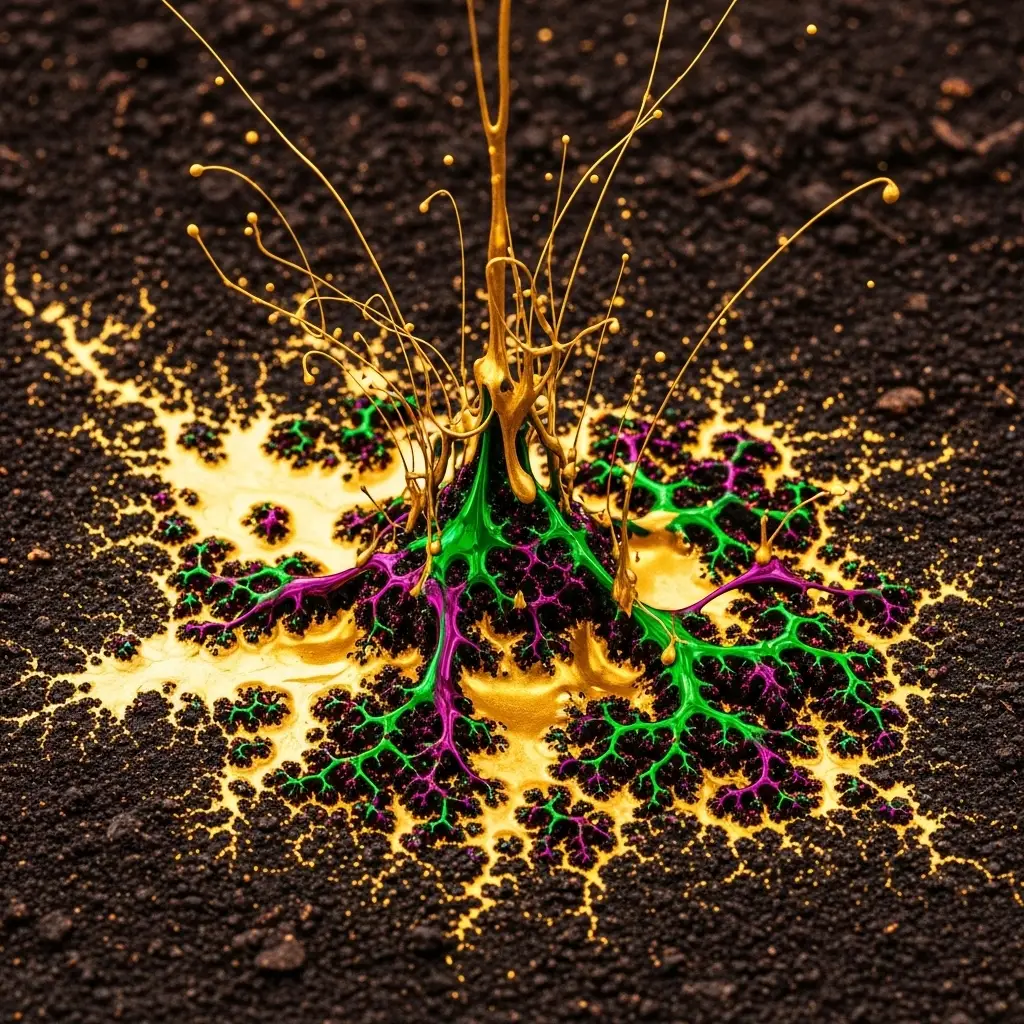Key Takeaways
- Creating a Meditation Garden fosters inner peace and connection with nature through mindfulness and intentional design.
- Select a serene location and choose meaningful plants to create a sacred space that reflects your personal intentions.
- Engage various elements, such as water features and sensory components, to enhance the meditative atmosphere.
- Explore various practices, such as mindful observation and walking meditation, to deepen your experience in the garden.
- Start small with simple tasks to cultivate your garden and inner tranquility, transforming it into a living sanctuary.
Estimated reading time:14 minutes
Table of contents
🍃7 Steps to Cultivating Inner Peace with a Meditation Garden

In today’s fast-paced world, finding moments of tranquility can feel like an impossible task. The constant hustle and bustle can leave us feeling stressed, anxious, and disconnected. But what if there was a simple way to co-create a living sanctuary of peace right in your backyard? This isn’t just about planting flowers; it’s about entering into a conscious partnership with the land, where you listen as much as you act. Enter the concept of garden meditation.
This practice combines the therapeutic benefits of nature with the calming power of mindfulness, offering a powerful tool for reducing stress and cultivating inner peace. In this blog post, we’ll explore the art of garden meditation, providing you with practical steps to create your own sacred space and guiding you through techniques to deepen your practice. Whether you’re a seasoned meditator or a beginner, you’ll discover how to harness the healing frequencies of nature to nurture your mind, body, and spirit. Every plant, stone, and drop of water vibrates with a unique energy. A meditation garden is your space to intentionally orchestrate these frequencies, creating a symphony of calm that helps attune your own energy back to a state of natural harmony.
🌱Creating Your Meditation Garden

Designing a meditation garden is a personal journey, a chance to create a space that reflects your inner landscape and nurtures your well-being. Think of yourself not as a designer, but as a curator of energy. Each choice you make, from the curve of a path to the placement of a stone, embeds your personal intention into the very soil. Here are some key elements to consider, thinking of each one as a layer of intention.
- Location and Layout: Choosing and Consecrating Your Sacred Ground
Beyond just looking for a quiet, secluded spot, try feeling for one. To do this, walk your property and stand in a potential area. Close your eyes, take three deep breaths, and notice: does your body relax or tense up? Does the air feel lighter here? Trust the subtle signals your body and intuition are sending you. This is the Earth offering you a place to connect.
Once chosen, consider incorporating a winding path, circular design, or even a simple spiral. This does more than guide your steps; it can symbolize the journey to your own center and the cyclical nature of life. A spiral path can represent the journey inward to the self and back out into the world, transformed.
Before you begin, you may wish to consecrate your space—a simple way to signal its sacred purpose. This can be as simple as lighting a candle and walking the perimeter, stating your intention aloud: “I dedicate this space to peace, healing, and connection.” Or, you might sprinkle a bit of salt water for purification, or even bury a small crystal with your intention sealed within it. - Plant Selection: Inviting Plant Allies
Select plants that appeal to your senses and promote relaxation. Think of them as living partners or “allies” in your practice—conscious beings with their own wisdom and energetic gifts. Before planting, take a moment to hold the seed or seedling in your hands. Silently (or aloud), welcome it to your garden and ask for its unique medicine to bless your space.
Native plants are a great choice, as they require less maintenance and support local ecosystems. Consider plants with soothing scents and energetic properties.- Lavender is known not just for its calming scent but also for a high spiritual vibration that cleanses a space.
- A rose might be chosen to correspond with the heart, inviting in feelings of love and compassion.
- Rosemary is excellent for clarity and spiritual protection.
- Chamomile can help soothe emotional turmoil.
- Seating and Comfort: Establishing Your Energetic Anchor
Include a comfortable place to sit or recline. Your seat is more than just a place to rest; it’s your point of grounding and connection to the Earth. The material can deepen your practice: a wooden bench connects you to the life force of trees, while a large, flat stone connects you to the ancient wisdom of the Earth itself. Ensure the seating allows you to maintain proper posture during meditation—not just for your back, but for allowing your body’s energy to flow freely and openly. - Water Features: Honoring the Element of Water
The sound of flowing water can profoundly enhance the meditative atmosphere. Metaphysically, water represents the flow of emotion and purification. Consider adding a small fountain, pond, or birdbath. Your water feature can become a symbolic tool for cleansing. Before you meditate, create a small ritual: dip your fingers into the water and touch your forehead and heart. Visualize it cleansing away any distracting thoughts, allowing you to enter your practice with clarity. Even a simple bowl of still water can be a powerful tool; it acts as a mirror for the sky, reminding us of the connection between “as above, so below.” - Sensory Elements: Balancing the Elements
Incorporate elements that engage all your senses to create a balanced, holistic space.- Earth: The soil, stones, and plants themselves provide a sense of grounding. You might even place a few meaningful crystals.
- Air: Gentle wind chimes, whose vibrations can clear stagnant energy, or simply the feeling of the breeze on your skin.
- Fire: The warmth of the sun, or a safely placed candle during your meditation, to represent transformation.
- Water: Your fountain, pond, or a simple bowl of water for a birdbath.
- Ether (or Spirit): The unseen space that holds everything together. It is the silence between the birdsongs, the stillness in the air, and the palpable sense of peace that fills your space. You honor this element simply with your conscious, loving presence.
🙏Practicing Garden Meditation

Once you’ve created your meditation garden, it’s time to start exploring different practices. Think of these techniques less as exercises and more as other ways to have a conversation with your garden and the spirit of nature.
- Mindful Observation: Communing with Nature
Sit comfortably and focus on observing the natural elements around you. Notice the colors, textures, and movements of plants and wildlife. Go beyond simple observation to feel the profound interconnectedness of it all. This practice helps dissolve the sense of separation between you and the natural world. - Walking Meditation: Grounding and Earthing
Use a path in your garden for a slow, mindful walk. Focus on the sensation of each step. Visualize this as a complete circuit of energy: as you exhale, imagine your feet releasing gray, heavy energy (stress, worry) into the ground, where Mother Earth lovingly composts it. As you inhale, imagine your feet drawing up a vibrant green or golden energy, nourishing every cell in your body. - Sound Meditation: Attuning to Nature’s Symphony
Close your eyes and listen to the natural sounds. Hear them not as random noises, but as a symphony—the song of your own personal ecosystem. Practice “deep listening” by focusing not just on the sounds, but on the silence between the sounds. You can even become part of the symphony by gently humming a single tone, feeling the vibration in your chest harmonize with the hum of the bees. - Breath Awareness
Sit quietly and focus on your breath, using the natural rhythm of your garden as a backdrop for deepening your awareness and anchoring yourself in the present moment. - Gardening as Meditation: A Co-Creative Ritual
Engage in simple gardening tasks mindfully. Frame these actions as sacred rituals:- Planting a seed becomes the physical act of setting a new intention for your life.
- Pulling a weed is the conscious act of releasing a limiting belief or negative thought pattern.
- Watering your plants is a ritual of nurturing your own soul with love and attention.
- Composting becomes a metaphor for transmuting life’s challenges into wisdom and personal growth.
🏡Conclusion: Your Sanctuary Awaits

The journey to inner peace doesn’t require a distant retreat; it can begin with a single step into a space you’ve cultivated with your own hands and intention. Your meditation garden is more than just a collection of plants and stones—it is a living sanctuary, a partner in your well-being, and a testament to your commitment to co-creating with the Earth. Think of it as a reflecting mirror; it will change as you change, reflecting your growth and seasons of life. By blending the healing power of nature with the clarity of mindfulness, you create a powerful refuge. The peace you cultivate here is not meant to stay in the garden; it is a gift you will carry back into your life, rippling out into the world.
🗓️Your First Steps to Inner Peace: A 7-Day Challenge

Reading about tranquility is one thing; cultivating it is another. It’s time to turn inspiration into action. Don’t wait for the “perfect” garden to begin. Your practice starts now. Commit to these three simple tasks over the next week.
- Task 1: Listen for the Land’s Invitation (Days 1-2). Your first mission is to walk your property and find the one corner that feels the most peaceful to you. Don’t just look with your eyes; think with your whole being. Mark this spot. Once chosen, stand in the center and whisper a small thank you to the land for offering you this space. This simple act of gratitude begins your relationship.
- Task 2: Place Your First Energetic Anchor (Days 3-4). You don’t need a complete design to start. This week, add one thing to your desired spot that engages your senses. Choose your element based on what you feel you need most: a stone for grounding (Earth), a wind chime for mental clarity (Air), or a single lavender plant for calm. This single act makes your intention tangible and activates the space.
- Task 3: Activate Your Sanctuary with Your Presence (Days 5-7). Your garden doesn’t have to be “finished” for you to use it. Go to your spot, with your one sensory element, and set a timer for just five minutes. Close your eyes and practice one of the techniques mentioned above. After your five minutes, take one more moment to notice how you feel simply. Jot down one word in a journal that describes the feeling. This helps you anchor the experience and track your journey. You are not just “using” the space; you are beginning a relationship with it.
The path to a calmer mind is cultivated one mindful moment at a time. Embrace the process, start small, and watch as your garden—and your inner peace—begins to flourish.
“Our actions and decisions today will shape how we will live. And so it is.”
If my words made you pause, smile, or think, Buy Me a Coffee. It helps fuel my thinking and keeps my dream alive, one word at a time. 🍵
📚Recommended Reads & Resources

Suggested Books
The books are categorized to help you find exactly what you’re looking for, whether it’s the practical design of a garden, the philosophy behind mindful gardening, or the science of nature’s healing effects.
On Creating Sacred & Meditation Gardens
- A Garden for the Senses: How Your Garden Can Soothe Your Mind and Awaken Your Spirit by Kendra Wilson is a beautiful, visual, and practical guide that aligns closelywith the article’s emphasis on creating a garden that engages all the senses (Earth, Air, Fire, Water, Ether).
- Peaceful Gardens: Transform Your Garden into a Haven of Calm and Tranquility by Stephanie Donaldson is a practical guide focused onaesthetics and elements that contribute to a serene atmosphere, covering everything from color theory and plant choice to the placement of water features and seating.
- Zen Gardens: The Complete Guide to Creating Your Own Japanese-Inspired Garden by Mira Locher: For those inspired by the minimalist, deeply symbolic nature of Zen gardens, this book provides historical context and practical steps for incorporating those principles into any space.
On Mindful & Spiritual Gardening
- Braiding Sweetgrass: Indigenous Wisdom, Scientific Knowledge and the Teachings of Plants by Robin Wall Kimmerer: This is perhaps the ultimate resource for understanding the concept of a “conscious partnership with the land” and viewing plants as “allies.” Kimmerer, a botanist and member of the Potawatomi Nation, beautifully weaves together scientific knowledge with the indigenous understanding of a reciprocal relationship with the Earth.
- The Well-Gardened Mind: The Restorative Power of Nature by Sue Stuart-Smith: A psychiatrist and avid gardener, Stuart-Smith explores the science and psychology behind gardening’s benefits for mental health. This book provides the scientific backing for the article’s claims about reducing stress and anxiety.
On Nature Connection & Ecotherapy
- The Nature Fix: Why Nature Makes Us Happier, Healthier, and More Creative by Florence Williams explores the scientific evidence for nature’s impact on our brains and bodies. It’s an excellent read to understand why the practices described in the article are so effective.
- Your Guide to Forest Bathing: Experience the Healing Power of Nature by M. Amos Clifford: The practice of Forest Bathing (Shinrin-yoku) is very similar to the “Mindful Observation” and “Sound Meditation” techniques mentioned. This book is an excellent guide to immersing oneself in a natural environment, a practice that can be done in a large forest or a small backyard garden.
- Earthing: The Most Important Health Discovery Ever? by Clinton Ober, et al.: The article mentions explicitly “Earthing.” This is the foundational book on the topic, explaining the science and benefits of direct physical contact with the Earth’s surface to reduce inflammation and stress.
Online Resources
These resources offer ongoing inspiration, community, practical tools, and guided practices that you can use directly in your garden.
Websites & Organizations
- American Horticultural Therapy Association (ahta.org): The official website for the practice of using plants and gardening to improve mental and physical health. It features resources, research, and articles that validate the therapeutic benefits discussed in the blog post.
- Association of Nature and Forest Therapy (natureandforesttherapy.earth): The leading organization for the practice of Forest Bathing. Their website offers a wealth of information, guides, and articles on deepening your connection to nature through sensory immersion.
- Mindful.org: A premier online magazine and resource for all things mindfulness. A quick search on their site for “nature,” “walking meditation,” or “gardening” will yield dozens of articles and guided practices.
- Garden Therapy (gardentherapy.ca): A popular blog by Stephanie Rose that focuses on the healing and creative aspects of gardening. It’s full of beautiful DIY projects, recipes, and ideas for creating a restorative outdoor space.
Apps for Your Garden Practice
- InsightTimer,Calm, orHeadspace: These leading meditation apps all feature guided walking meditations, nature sounds, and mindfulness exercises that are perfect for your new meditation garden. You can find meditations specifically designed for “grounding,” “gratitude,” or “connecting with nature.”
- Seek by iNaturalist: This app helps you identify plants and animals using your phone’s camera. It’s a fantastic tool for enhancing the “Mindful Observation” practice, helping you learn the names and details of your “plant allies” and deepen your sense of connection and wonder.
- PictureThis – Plant Identifier: Similar to Seek, this app focuses on plant identification and care. Using it can be a mindful act of getting to know the individual beings that make up your garden sanctuary.
Podcasts & YouTube Channels
- On Being with Krista Tippett (Podcast): This award-winning podcast often features conversations with ecologists, poets, and spiritual thinkers (including Robin Wall Kimmerer) who explore humanity’s relationship with the natural world.
- Gardener’s World (BBC / YouTube): While primarily a practical gardening show, its serene pacing, beautiful cinematography, and the hosts’ deep love for plants can be incredibly meditative and inspiring. It’s an excellent resource for learning about plants in a peaceful way.
SoBrief.com provides users with book summaries and related content.
Remember to explore these resources with an open mind and trust your intuition to find what resonates most deeply with your journey of rediscovery.

🔗 Affiliate Note: Some links on this page may be affiliate-based, allowing us to earn a small commission at no additional cost to you. Your support helps fuel this creative and healing mission—thank you!

Copyright©️ IZALGO, LLC All Rights Reserved
